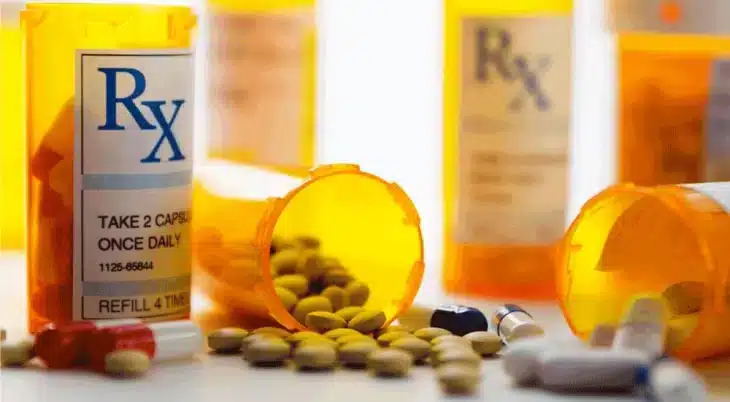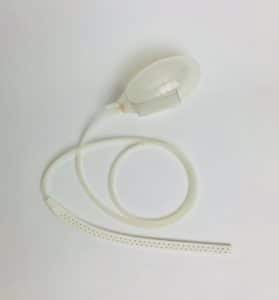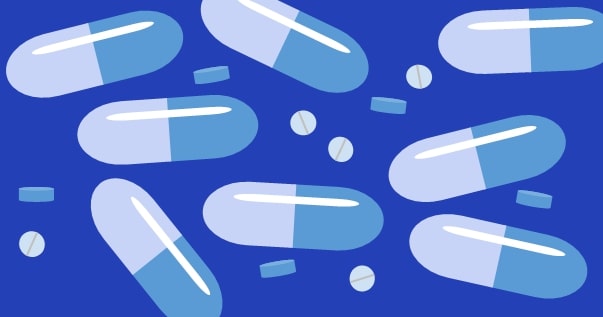We want you to have an exceptional experience and spectacular outcome, whether you undergo cosmetic or reconstructive plastic surgery by Dr. Kunkel. Once you make the decision to schedule a procedure, a number of questions will naturally arise. Other pages under the Resources section of the website tell you about supplies to consider for specific procedures. Here you will find answers to questions you will likely have before and after your surgery by Dr. Kunkel.
**If you have reached this page from a “Google” search and are NOT a patient of Dr. Kunkel, you should contact your own surgeon about her/his recommendations. Other physicians may have very different thoughts and options than are listed on this page.**
What Medications Should I Avoid Before My Surgery?

We have a list of medications that you should avoid. See it by clicking here: Medications to Avoid.
Aspirin and aspirin-containing medications should be stopped for about 7 days before surgery. Blood-thinning medications like Eliquis, Pradaxa, Xarelto, and Coumadin typically also need to be stopped, but that is usually arranged with the help of a cardiologist.
Do I Need To Stop Smoking Before Surgery?
The short answer? Yes. The longer answer? If you are only undergoing breast augmentation surgery and nothing else (no breast lift, no tummy tuck, no rhinoplasty), it’s probably not super important that you stop smoking before surgery. However, if you are about to have a breast lift, tummy tuck, facelift, lower eyelid surgery, or rhinoplasty, you should stop smoking at least 2 months before you surgery. The longer your body does not have nicotine in it before and after surgery, the less risk you will have.
All nicotine will cause problems. Whether the nicotine comes from cigarettes, nicotine patches or gum, or vaping products like Juul, it will constrict tiny blood vessels and potentially cause major problems healing. So, yes, stop smoking long before your surgery.
Will I Need A Drain?

Dr. Kunkel and his staff will talk with you about whether you will require a drain with your surgery. Most cosmetic breast operations do not require a drain. For instance, breast augmentation, breast lifts, and breast reductions do not typically require use of a drain. Some patients who undergo body contour procedures will have a drain placed. Dr. Kunkel often places a drain for tummy tucks, for instance.
How Do I Manage My Drain?
While you are in the Recovery Room, the nursing staff there will show you and whoever will be helping you after surgery how to empty, measure, and record fluid that collects in the drain. It sounds complicated but it’s actually pretty easy. During your first visit in the office a member of Dr. Kunkel’s staff will go over in detail how to take care of your drain(s).
Before you undergo your surgery, make sure to refer to the Recommended Supplies for Plastic Surgery Procedures section under Resources on this website. If you are going to require a drain, some of the items you should purchase will be helpful in managing your drain.
You will be provided with a sheet of paper that will help you keep track of how much fluid accumulates in your drain(s). The amount of fluid a drain collects is an indication of tissue healing. As less fluid is collected, the tissues are healing. We will have you monitor the amount of fluid by measuring and recording the amounts over 24 hour periods.
For a copy of the drain sheet, click here: Drain Record.
Drain Care InstructionsHow Do I Manage My Drain?: Step-By-Step Guide
Wear nonsterile exam gloves when doing any drain care. Follow the instructions shown below.
Emptying and Measuring the Drain
Do this three times a day.
- Clean the ‘pop top’ of the drain with alcohol. Then open the ‘pop top’.
- Pour the contents of the bulb into a measuring device. Squeeze the bulb as you do this so the contents flow out into the measuring device.
- Measure the volume of fluid in cc’s (also known as ml’s). Record this in the appropriate area of the drain sheet.
Clean the ‘pop top’ of the drain with alcohol again. - Squeeze the ‘bulb’ of the drain and keep squeezing it while you place the ‘pop top’ back in its place.
- Let go of the bulb once the pop top is in place. When you let go of the bulb, it should still look compressed. The bulb should be providing suction.
- If the bulb does not look compressed at this point, try doing this again. Open the pop top, squeeze and continue squeezing the bulb, and place the pop top back in place. Stop squeezing the bulb only after the pop top has been put back in its place in the bulb.
Taking Care of the Drain Site at the Skin
Do this two times a day.
- Clean the skin site with chlorhexidine (Hibiclens).
- Place antibiotic ointment (Neosporin, Triple Antibiotic, or Bacitracin) around the tube on the skin.
- Cover with gauze to keep the antibiotic ointment off of your clothing.
What Medications Are Prescribed For After Cosmetic And Reconstructive Plastic Surgery?

Medications will vary according to the specific procedure. Take them as listed on the label of your medication bottle. Remember, if the words “as needed” appear on the label, that means that you should NOT take them if you don’t NEED them. Take them only if you need to take them. If the words “as needed” do not appear on the bottle, then take the medication exactly as the label says.
Once you have scheduled surgery, we will see you in the office several days before the surgery takes place. At that preoperative visit we provide you with prescriptions. The medications are for use after the surgery; do not take them before the surgery unless you are specifically instructed to do so. In the following sections you will find lists of medications. Look for the names of the medications on the prescriptions we provided to you. We typically provide prescriptions for generic medications. In the following lists, the generic names of the medications are listed first. Commonly known brand names are listed in parentheses.
Antibiotics Commonly Prescribed For Use After Plastic Surgery
If an antibiotic (listed below) was prescribed for you and you go home immediately after surgery, take one antibiotic tablet that evening at home. If you spend the night in the surgical facility you will receive antibiotics at the facility while you are there. If you go home on the day of your surgery, take one antibiotic tablet that evening at about 7 p.m. On the day AFTER your procedure, you should begin taking whichever antibiotic was prescribed for you as listed below.
- Cephalexin (Keflex). Take one of these three times every day after that until the bottle is empty.
- Azithromycin (Zithromax). Take this medication one time every day after that until the bottle is empty.
- Clindamycin (Cleocin). Take this medicine three times every day after that until the bottle is empty.
- Sulfamethoxazole/trimethoprim (Bactrim DS). Take this two times a day after that until the bottle is empty.
Muscle Spasm Medications Prescribed For Use After Breast Surgery And Tummy Tuck Surgery
These are “as needed” medications. Remember, this means that you do not need to take them if you are not feeling tightness. If you do feel tightness and want to take the muscle relaxing medication, take it as shown below. This may be started about 4 hours after you arrive home from your surgery.
- Tizanidine (Zanaflex). Take one of these every eight hours if you are feeling tightness from muscle cramping.
- Carisoprodol (Soma). Take one of these every eight hours if you feel tight from muscle cramping.
Pain Medications For Use After Plastic Surgery Procedures
There are three types of pain medications we may have patients take after surgery. We may provide prescriptions for both a narcotic pain medication as well as a different medication that helps minimize pain and decrease the need for narcotics. Anti-inflammatory medications also may be very helpful. These medications are described below.
These are “as needed” medications. Take these only if you are having significant pain. If you are not having pain, do NOT take these. Narcotics are addictive medications. The more of these you take, and the longer you take them, you may become addicted to them. You do not want your children see you become addicted to narcotics! If you need to take the narcotic that was prescribed for you, you may begin about 2 – 4 hours after you arrive at your home.
- Acetaminophen with codeine (Tylenol #3). Take one or two of these every six hours if you are having significant pain. If you are NOT having significant pain, do NOT take them. Don’t take them just to “keep ahead of the pain”.
- Hydrocodone with acetaminophen (Norco, Lortab). We rarely prescribe this medication. Very few people need anything this strong. If it is prescribed for you, take one or two every six hours if you are having a lot of pain.
- Tramadol (Ultram). This is a narcotic-like medication. We usually prescribe this for people who are allergic to codeine or who develop severe nausea with narcotics. Take one or two of these every six hours if you are having significant pain. Like narcotics, tramadol is an addictive medication. Take it only if you need it.
Non-narcotic Medications to Help Minimize Pain
These are medications that you should take as described below. They are not “as needed” medications. Rather, they should be put on your schedule and you should take them either three times or two times every day, depending on the medication.
- Gabapentin. If you were given a prescription for this, take one of these on the evening of your surgery after you arrive home. Then take one tablet three times every day after that until the prescription is gone.
- Naproxen (Aleve). Many people have this at home already. You do not need a prescription for it. If you do have it at home, take one on the evening of your surgery. Begin taking one tablet two times every day on the first day after your surgery. For instance, take one early in the morning, and take the second in the evening. Do that for at least one week.
- Ibuprofen (Motrin, Advil). Like naproxen, many people already have some form of ibuprofen at home. No prescription is necessary. If you have both naproxen and ibuprofen, DO NOT take both of these medications. Take one or the other, but NOT BOTH. If you have ibuprofen, take two of the 200 mg tablets on the evening of your surgery. Beginning the next day take two of the 200 mg tablets three times every day. Remember, don’t take ibuprofen and naproxen, just one OR the other. If you have both, either is fine, but don’t take both of them.
Blood Thinners That May Be Prescribed For Use After Surgery
These medications are most commonly prescribed for use after body contouring procedures like a tummy tuck or lower body lift. If one of these is prescribed for you, start taking it the day after your surgery.
- Warfarin (coumadin). Start this on the next day after the surgery. For instance, if you have your surgery on Thursday, your first dose of warfarin should be on Friday. Take one of these daily until they are all gone.
- Apixaban (Eliquis). Take one of these each day until they are all gone.
Medications To Help Reduce Swelling After Plastic Surgery
- Methylprednisolone (Medrol dose pack). Take these beginning the day after your surgery. Look at the directions in the package. Take this medication as directed in the package insert.
- TobraDex ophthalmic suspension. This is a combination steroid and antibiotic that we prescribe for people undergoing lower eyelid surgery. Apply two drops of this to the eyes the evening of surgery once you arrive at home. After that, apply two drops to each eye three times every day until otherwise directed by Dr. Kunkel.
